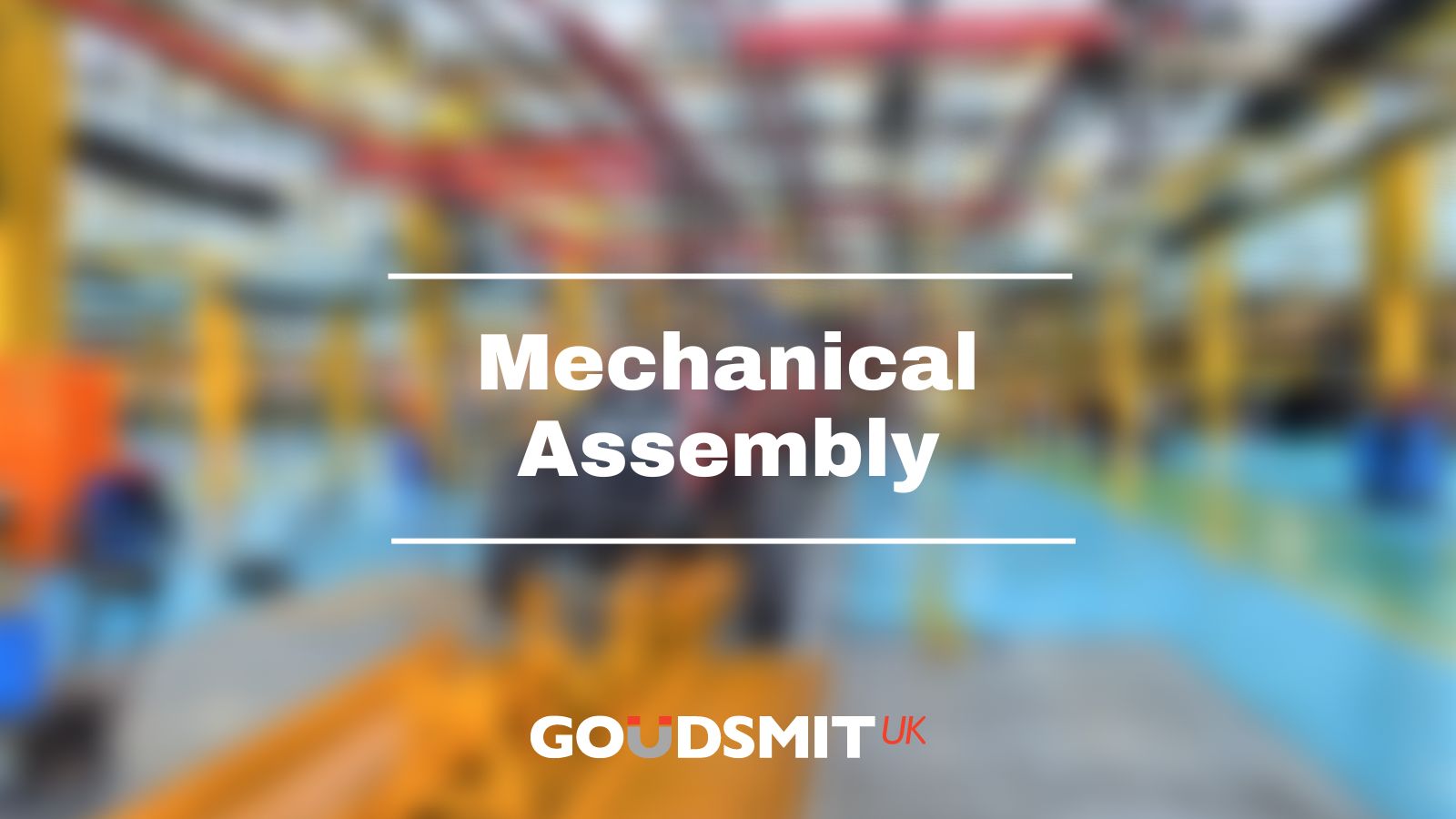When it comes to assembling permanent magnets, the correct choice is critical for performance. With that in mind, we’ve created a series of articles covering the seven main types of assemblies Goudsmit UK offer to help you with your design.
Mechanical Assembly
Mechanical assembly dates back to the mid-1700s when manufacturers first realised that building a single part from multiple applications dramatically decreased costs, while making repairs much faster. Interchangeable, mass-produced parts have formed the basis of mechanical assembly since the beginning, and remain the backbone for it today. Although today’s industry continues to demand components to perform some incredible things, the basics of mechanical assembly have remained the same.
What Is Mechanical Assembly?
Mechanical assembly is the process of putting together components on an assembly line. In addition to this, it also refers to an assembled product or part made in this way. In either case, mechanical assembly carries the connotation of putting parts together, making a complete product to perform a function.
The Process of Mechanical Assembly
In order to mechanically attach two or more parts together, numerous fastening methods are used. Fasteners are generally used for this, being added on during the assembly operation. However, sometimes fastening involves shaping one of the components being assembled without the need of separate fasteners.
Two Types of Mechanical Fastening
1. Ease of disassembly
- Threaded fasteners – Refers to any hardware components that have external or internal threads for the assembly of parts.
- These commonly include screws, bolts and nuts.
2. Create a permanent joint
- Rivets – Unthreaded, headed pins used to join two or more parts, where the passing of the pin through holes in parts and forming a second head in the pin on the opposite side creates a permanent fixture.
- Mainly used for lap joints.
Applications
With its high reliability and performance, mechanical assembly is the chosen technique for a variety of applications such as:
- Automobiles
- Telephones
- Aeroplanes
- Machine Tools
Benefits
Mechanical assembly proves quite popular within the industry, benefits include:
- Easy to test and inspect the products assembled.
- Products can be easily disassembled and also reassembled in remote locations.
- Allows for press fit and screw assembly.
Disadvantages
It’s difficult to find the perfect assembly technique, thus mechanical assembly comes with some drawbacks:
- Low vibration resistance.
- Fasteners, press fits, interference fits, threads and clips are generally quite expensive.
Despite this, mechanical assembly proves easy to test and validate so many often look to it as a first-choice solution. This technique involves some of the lowest risk methods of assembling magnets, making mechanical assembly a popular choice among many magnet manufacturers.
Goudsmit UK
We have years of experience, and there are few other suppliers that can provide better results. Contact us today for more information at info@goudsmit.co.uk or on +44 (0) 2890 271 001.
For more information download our products and services brochure.







